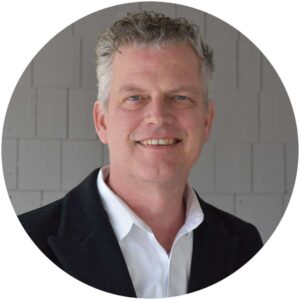How Recently Has Your Organization Conducted a Needs Assessment?
As a nonprofit or government agency professional, your goal is to deliver solutions that improve complex social problems such as poverty, social inequities, addiction, homelessness, and lack of access to quality education. Have you ever wondered why, despite your best intentions, your overall community’s population-level outcomes are not improving in these areas? If you have been delivering services to a target population for some time, and have not seen significant improvements in this particular social issue, then a likely next step is to conduct a needs assessment.
All communities are in a continual state of change. Major shifts in the average age of the population or ethnic composition can alter the underlying needs and root causes that serve as the basis for social programs. Social, cultural and economic changes can alter the characteristics or attitudes of communities, which can affect the success of programs and initiatives. Needs assessments often uncover the degree to which policies and programs—that once may have been suitable—have become ineffective or obsolete. Working from accurate and up-to-date information about the needs of the community or target population will result in more effective strategy and plans.
What is a Needs Assessment?
At the core, a needs assessment is a planning tool. The goal is to gather accurate information representative of the needs of a community or targeted population. Prior to designing programs or allocating resources, research is conducted to best understand the current situations and the root causes of these situations. Once organizations conduct a needs assessment, they are in a better position to align their programming and efforts to remove barriers to successful outcomes.
To successfully conduct a needs assessment, the processes must be collaborative and involve the organization’s stakeholders and those they serve. Learning from those most impacted by an organization’s programs will ensure you are developing goals, delivering services, and solving problems in ways that are most attractive and desirable to those who you want to serve.
Uncover the Unseen Predictive Factors to Success
Social change is not occurring at a significant rate in most communities because programs are not addressing the underlying causes of these problems, or programs are not addressing the factors that prevent engagement. Underlying reasons for not engaging in services can span from lack of awareness, cultural competence, trust, programs not addressing their specific challenges, transportation issues and time, to fear of benefits cliffs, or even an unwillingness, lack of desire, or fear of changing their circumstances. If a certain experience is all someone has ever known, the thought of drastic change—even for the better—could be daunting.
For example, there has recently been a rise in the number of young adults between the ages of 18-24 experiencing homelessness in Columbus, Ohio. In order to combat this concerning social problem, Measurement Resources Company was contracted to partner with the community task force to conduct a needs assessment. After conducting focus groups with young adults experiencing homelessness, stakeholder interviews, and analyzing available shelter data, the community had a much better sense of the needs of these young adults that were not currently being addressed in the communities’ emergency crisis response system. These young adults had different needs in terms of feeling safe, life skills, and education and employment needs. Unlike older adults in the homeless system, these young adults lacked previous experience living on their own and taking care of basic needs. They needed more developmentally appropriate supports to be successful. Having this information allowed the community to create a comprehensive plan and allocate resources to the specific needs of this population. Without these data, the community would have continued to do more of the same, which would have resulted in lack of engagement or greater recidivism for this younger population.
Taking Action with Assessment Results
Once you have quantified the need for your services and the community, and understand the factors which predict engagement and success, leaders need to use these results to take action and align resources. Consider using your needs assessment results to better direct your energy to:
- Reach as many individuals within your target audience as possible;
- Reach them with the right message;
- Provide guidance on overcoming any barriers—perceived or real—to accessing your services;
- Offer precisely the right resources they need; and
- Meet them where, when and how they want to access your resources.
Even if you’ve previously conducted a needs assessment, community challenges are in constant flux. A single shift among one of many factors that contribute to a complex social challenge can change the effectiveness of current programs and policies. It is critical to understand this level of disruption in order to continue on your path of real and lasting social impact.
Measurement Resources is Here to Help You Achieve Lasting Social Change
From providing guidance to full-service needs assessments (creating, conducting and providing independent, unbiased analysis), Measurement Resources has worked with hundreds of organizations nationwide. Contact us today to schedule a free consultation call with one of our data scientists to explore how your organization can conduct a needs assessment.





